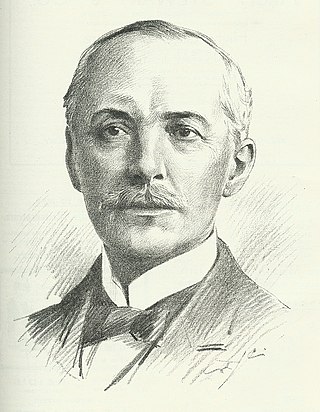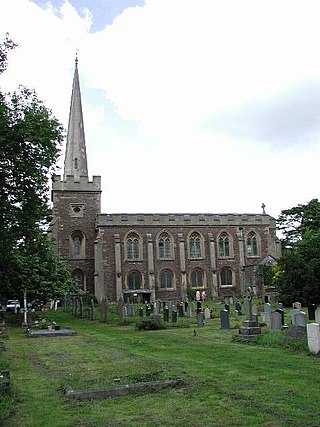Related Research Articles
The General Assembly of Unitarian and Free Christian Churches is the umbrella organisation for Unitarian, Free Christians, and other liberal religious congregations in the United Kingdom and Ireland. It was formed in 1928, with denominational roots going back to the Great Ejection of 1662. Its headquarters is Essex Hall in central London, on the site of the first avowedly Unitarian chapel in England, set up in 1774.

The University of the West of England is a public research university, located in and around Bristol, England, UK. With more than 30,000 students and 3,000 staff, it is the largest provider of higher education in the South West of England.

Clifton is both a suburb of Bristol, England, and the name of one of the city's thirty-five council wards. The Clifton ward also includes the areas of Cliftonwood and Hotwells. The eastern part of the suburb lies within the ward of Clifton Down.
Sir George Herbert Oatley was an English architect noted for his work in Bristol, especially the gothic Wills Memorial Building. He was knighted for public service in 1925.

Montpelier railway station is on the Severn Beach Line and serves the district of Montpelier in Bristol, England. It is 2.85 miles (4.59 km) from Bristol Temple Meads. Its three letter station code is MTP. The station has a single platform, serving trains in both directions. As of 2015 it is managed by Great Western Railway, which is the third franchise to be responsible for the station since privatisation in 1997. They provide all train services at the station, mainly a train every 30 minutes in each direction.
The city of Bristol, England, is divided into many areas, which often overlap or have non-fixed borders. These include Parliamentary constituencies, council wards and unofficial neighbourhoods. There are no civil parishes in Bristol.
John James StevensonFRSE FSA FRIBA, usually referred to as J. J. Stevenson, was a British architect of the late-Victorian era. Born in Glasgow, he worked in Glasgow, Edinburgh and London. He is particularly associated with the British Queen Anne revival style.

Sir John James Burnet was a Scottish Edwardian architect who was noted for a number of prominent buildings in Glasgow and London. He was the son of the architect John Burnet, and later went into partnership with his father, joining an architectural firm which would become an influential force in British Modern architecture in the 20th century.

St John the Baptist is a church in the Frenchay area of Bristol, England.

Sir John William Simpson KBE FRIBA was a British architect and President of the Royal Institute of British Architects from 1919 to 1921.

Hippolyte Jean Blanc was a Scottish architect. Best known for his church buildings in the Gothic revival style, Blanc was also a keen antiquarian who oversaw meticulously researched restoration projects.

Fairfield Grammar School was a secondary school in Bristol, England, founded in 1898 as Fairfield Secondary and Higher Grade School. It became a grammar school in 1945 and closed in 2000, to be replaced by a new comprehensive, Fairfield High School, at first on the same site, but now located in Stottbury Road, Bristol. BHES, is now based in half of the old school, the other half is now Fairlawn Primary School.
Samuel Burleigh Gabriel was a Victorian architect who practised in Bristol, England. For a number of years he was in partnership with another architect, John Hicks, who later worked at Dorchester. Their offices were at 28 Corn Street, Bristol.

Fairfield High School is an Academy secondary school in Horfield, Bristol, England. The schools catchment area is Horfield, Lockleaze and Eastville.

Sir Howard Morley Robertson MC RA was an American-born British architect, President of the Royal Institute of British Architects from 1952 to 1954 and a Royal Academician. In 1949, he was the winner of the Royal Gold Medal for architecture.
North Bristol NHS Trust is a National Health Service trust that provides community healthcare and hospital services to Bristol, South Gloucestershire, and North Somerset, England. The trust employs over 8,000 staff delivering healthcare across Southmead Hospital, Cossham Hospital, and the Bristol Centre for Enablement, as well as the local communities. Medical teaching facilities are provided in association with the University of the West of England, Bristol University, and the University of Bath.

Montpelier is an inner suburban area of Brighton, part of the English city and seaside resort of Brighton and Hove. Developed together with the adjacent Clifton Hill area in the mid-19th century, it forms a high-class, architecturally cohesive residential district with "an exceptionally complete character". Stucco-clad terraced housing and villas predominate, but two of the city's most significant Victorian churches and a landmark hospital building are also in the area, which lies immediately northwest of Brighton city centre and spreads as far as the ancient parish boundary with Hove.

George W. Longstaff (1850-1901) was an American architect practicing in Bridgeport, Connecticut.

John Keppie was a Glasgow architect and artist. From an early age he was a close friend of Edward Atkinson Hornel and would often bring in New Year with him in Kirkcudbright. Within the architectural profession, he was closest to John Archibald Campbell, and is credited with training Charles Rennie Mackintosh.

David Forbes Smith (1865–1923) was a Scottish architect of many of the Edwardian Baroque civic and co-operative buildings in Fife during the late nineteenth and early twentieth century. Born in Kirkcaldy in 1865 he apprenticed as a carpenter before being articled to John Murray of Kirkcaldy as an architect from 1885 to 1888. He obtained a place in the newly formed partnership of Honeyman & Keppie in Glasgow, overlapping and being photographed in staff pictures with Charles Rennie Mackintosh, and was briefly in the office of Charles Davidson of Paisley before moving to Salisbury as chief assistant to the architect Fred Bath whose office he passed the qualifying exam in 1893. He was admitted as an Associate of the Royal Institute of British Architects on 12 March 1894. In 1898 he returned to his home town, spending the remainder of his career running his own practice until his death on 28 October 1923.
References
- ↑ William Larkins Bernard at archINFORM, accessed 25 November 2008
- ↑ Charles Edward Davis at scottisharchitects.org.uk, accessed 25 November 2008
- ↑ Richard Croft James at scottisharchitects.org.uk, accessed 25 November 2008
- 1 2 Princess Charlotte obelisk at kcl.ac.uk, accessed 25 November 2008
- ↑ Mace, Angela, Architecture in Manuscript, 1601-1996: Guide to the British Architectural Library Manuscripts and Archives Collection (Mansell, 1998), page 66 available at books.google.com
- ↑ Transactions of the Sanitary Institute (Offices of the Sanitary Institute, 1893), page 484 available at books.google.com
- ↑ Transactions of the Sanitary Institute (Sanitary Institute of Great Britain, 1894), p. 285
- ↑ Gomme, Andor, Michael Jenner, & Bryan D. G. Little, Bristol, an Architectural History (Lund Humphries, 1979), p. 430
- ↑ The Kalendar of the Royal Institute of British Architects 1889, p. 44
- ↑ The Kalendar of the Royal Institute of British Architects 1904, p. 65
- ↑ The History of Frenchay Hospital 1930–1940 at jbinternet.plus.com, accessed 25 November 2008
- ↑ Parish Magazine 1887 - Parish of Winterbourne at frenchaymuseumarchives.co.uk, accessed 25 November 2008
- ↑ Bristol Baptist Churches at blueyonder.co.uk, accessed 25 November 2008
- ↑ About Bristol Suburbs Montpelier Fairfield School at about-bristol.co.uk, accessed 25 November 2008